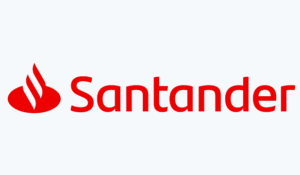$LVMH $KER $MC
#LuxuryMarket #Europe #ChinaEconomy #USATariffs #LuxuryGoods #StockMarket #EarningsSeason #RetailTrends #GlobalTrade #Investing #FashionIndustry #Economy
Europe’s luxury sector is showing notable signs of a rebound following a positive earnings season, driven by strong performances from leading brands such as LVMH, Kering, and Hermès. Many luxury houses reported double-digit revenue growth, particularly in the U.S. and Europe, where affluent consumers continue to spend on high-end goods despite a broader slowdown in discretionary spending. Additionally, a resurgence in high-end tourism, bolstered by a weaker euro against the U.S. dollar, has attracted wealthier international shoppers to Europe’s flagship stores. However, despite the sector’s optimism, headwinds remain as investors closely monitor persistent macroeconomic concerns, particularly those centered around China and the U.S. trade policies.
China’s ongoing economic challenges are proving to be a drag on luxury companies that have historically relied on the country for growth. Amid weaker consumer confidence, rising youth unemployment, and a slower-than-expected post-pandemic recovery, demand for high-end fashion and luxury accessories in China has not bounced back as swiftly as anticipated. For global luxury brands that depend on Chinese luxury consumers—who once accounted for more than a third of global luxury spending—this slowdown raises concerns about inventory buildup and margin pressure. Furthermore, Chinese retail habits continue to shift, with a greater focus on domestic brands and purchasing within China’s borders rather than abroad. This shift underscores the need for European luxury companies to diversify their geographical revenue streams.
Another looming challenge is the threat of U.S. tariffs on European luxury goods, which could have a significant impact on pricing strategies and profitability. If the U.S. pursues additional trade measures under a more protectionist policy, brands like Louis Vuitton, Gucci, and Chanel could be forced to raise prices in their largest overseas market. Higher tariffs could lead to subdued demand and force high-end retailers to rethink their supply chain logistics. Furthermore, with inflation concerns still present in the U.S., higher tariffs could be passed onto consumers, resulting in softer demand growth, especially among aspirational buyers who drive a significant portion of entry-level luxury sales. The potential for trade tensions remains a major risk factor for European luxury stocks, which have already faced volatility due to shifting global economic conditions.
Despite these macroeconomic risks, the luxury sector appears to be navigating these challenges with resilience. Many leading brands are focusing on exclusive product lines, high-margin collections, and direct-to-consumer retail strategies to protect their profit margins. Additionally, sustained demand from ultra-high-net-worth individuals continues to act as a buffer against broader economic concerns. Investors will be keeping a close watch on upcoming earnings reports to gauge whether luxury brands can maintain their current momentum. For now, while the industry remains optimistic about its long-term prospects, short-term volatility tied to China’s economic outlook and potential U.S. tariffs could weigh on stock performance and investor sentiment in the months ahead.











Comments are closed.